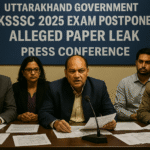
Russia Kamchatka Earthquake & Pacific Tsunami Alerts – July 30, 2025

An 8.8‑magnitude earthquake struck near Russia’s Kamchatka Peninsula on July 30, triggering tsunami waves up to 5 m in Russia and alerts across the Pacific including Japan, Hawaii, and West Coast USA.
Table of Contents
Overview of the Seismic Event
On July 30, 2025, at approximately 11:30 a.m. local time, a powerful 8.8-magnitude earthquake struck near Russia’s Kamchatka Peninsula, triggering tsunami warnings across the Pacific Basin. The epicenter was located 119-136 kilometers east-southeast of Petropavlovsk-Kamchatsky at a depth of 19 kilometers beneath the ocean floor. This shallow depth significantly increased the earthquake’s destructive potential and capacity to generate tsunamis. The seismic event lasted over three minutes, with ground shaking persisting long enough for residents to initiate evacuation procedures.
The earthquake ranks among the six most powerful seismic events ever recorded globally. Its magnitude matches the intensity of Chile’s 2010 earthquake and Ecuador’s 1906 event. Only five earthquakes in documented history have exceeded this magnitude, including the 2011 Tohoku earthquake in Japan (9.1) and the 2004 Indian Ocean earthquake (9.1-9.3). The energy released was equivalent to approximately 1,000 nuclear weapons, demonstrating the extraordinary geological force involved.
The Pacific Tsunami Warning Center, operated by NOAA, activated within minutes of detecting the earthquake. Warning bulletins were issued to 46 countries and territories around the Pacific Basin. The rapid response and coordinated international efforts resulted in no confirmed fatalities despite the earthquake’s massive magnitude. This outcome represents a significant achievement in disaster preparedness and early warning system effectiveness.
Geological Analysis and Tectonic Context
Location and Plate Dynamics
The earthquake occurred along the Kuril-Kamchatka Trench, one of Earth’s most seismically active zones. This underwater trench system represents a classic subduction zone where the Pacific Plate slides beneath the Okhotsk Sea Plate. The convergence occurs at a rate of approximately 8-9 centimeters per year. This geological arrangement creates conditions conducive to mega-thrust earthquakes, as accumulated stress from decades of plate movement releases suddenly in catastrophic ruptures.
The rupture zone extended over 600 kilometers along the seafloor. Preliminary geological surveys indicate significant seafloor displacement across this zone, with vertical movements exceeding 10 meters in some areas. These findings contribute to understanding subduction zone behavior and improving long-term seismic hazard assessments for the Pacific Basin.
Seismological Characteristics
Seismographs worldwide registered the earthquake within minutes, providing precise location and magnitude data. Over 150 seismograph stations detected the event and contributed to the rapid assessment. The prolonged duration of ground shaking tested building structures across the region and reflected the massive rupture zone involved.
The Richter scale’s logarithmic nature means each whole number increase represents a tenfold increase in amplitude and approximately 31 times more energy release. The 8.8 magnitude therefore represents an enormous energy release that affected a wide geographic area. Initial analysis suggests a complex rupture involving multiple fault segments, offering valuable data for seismological research.
Historical Context and Regional Seismic Activity
The 1952 Severo-Kurilsk Disaster
The most relevant comparison comes from the region’s own history. On November 4, 1952, a 9.0-magnitude earthquake struck near Severo-Kurilsk, generating tsunami waves reaching 18 meters in height. Approximately 2,336 lives were lost in that disaster. The 1952 event remains one of the deadliest tsunamis in Pacific history and established the urgent need for comprehensive early warning systems.
In 1952, residents had no warning systems in place and limited understanding of tsunami behavior. Entire communities were swept away as massive waves inundated coastal areas within minutes of the earthquake. The tragedy became a catalyst for developing the Pacific-wide tsunami warning network that proved effective in 2025.
Other Notable Seismic Events in the Region
Historical records reveal a pattern of mega-earthquakes along the Kuril-Kamchatka Trench dating back centuries. In 1841, a Kamchatka earthquake estimated at 9.0 magnitude generated tsunamis with run-up heights reaching 15 meters. Wave effects were recorded as far away as Hawaii, demonstrating the Pacific-wide impact potential.
The 1918 Kuril Islands earthquake, measuring magnitude 8.1, killed 23 people from tsunami effects in Russia and across the North Pacific. In 2006, a magnitude 8.3 event generated tsunamis up to 22 meters high, impacting northern Japan. These historical precedents underscore the persistent risk posed by this geological zone, making the July 2025 event a continuation of well-established seismic patterns rather than an anomaly.
Tsunami Generation and Wave Propagation
Wave Formation Mechanisms
The earthquake’s shallow depth and massive magnitude created optimal conditions for significant tsunami generation. As the seafloor ruptured and displaced vertically, enormous volumes of water moved, creating waves that radiated outward from the epicenter. These waves traveled at speeds approaching 800 kilometers per hour in deep ocean areas.
Deep-ocean Assessment and Reporting of Tsunamis (DART) buoys throughout the Pacific confirmed tsunami generation and provided real-time wave height data as the tsunami propagated. Coastal monitoring stations and tide gauges tracked wave arrival and provided ground-truth data for ongoing assessments. This multi-layered monitoring approach enabled accurate predictions of wave arrival times and heights across the Pacific Basin.
Regional Wave Impacts
Kamchatka Peninsula: Severo-Kurilsk recorded waves between 3-4 meters, which arrived within 15-20 minutes of the earthquake. These waves flooded the port town’s harbor area and swept away numerous vessels. Infrastructure damage included widespread power outages affecting approximately 45,000 residents. Low-lying areas, including several kindergartens and schools, experienced flooding. Critical port facilities sustained damage. Despite significant property damage, effective evacuation procedures resulted in no confirmed fatalities.
Japan: Hokkaido experienced waves reaching 60 centimeters (0.6 meters). The Japanese government evacuated 1.9 million people from coastal areas across Hokkaido and Japan’s Pacific coast. Tsunami advisories were upgraded to warnings with expected wave heights up to 3 meters. This represented the largest peacetime evacuation in Japanese history. Authorities evacuated personnel from the Fukushima nuclear power plant as a preventive measure. The Japan Meteorological Agency’s sophisticated warning system, developed following the 2011 Tohoku disaster, enabled precise impact predictions and targeted evacuations.
Hawaii: The Hawaiian Islands experienced waves reaching 1.8 meters, prompting comprehensive coastal evacuations on Oahu. Flight cancellations occurred throughout the island chain. The state’s well-developed tsunami preparedness protocols, refined through decades of Pacific-wide events, ensured orderly evacuations. Airports cancelled hundreds of flights as a precautionary measure.
Alaska and North America: Alaska’s Aleutian Islands recorded waves of approximately 30 centimeters (0.3 meters). Coastal areas throughout the U.S. West Coast—including Washington, Oregon, and California—remained under tsunami watches and advisories for over 12 hours. British Columbia implemented precautionary measures for its coastal communities.
Broader Pacific Region: Countries across the Pacific Basin implemented varying levels of response. Australia and New Zealand issued tsunami warnings for their Pacific coastlines, with New Zealand implementing precautionary evacuations in vulnerable coastal areas. The Philippines and Taiwan activated warning systems and prepared coastal communities. Chile and Mexico, located across the Pacific, issued advisories and monitored conditions.
International Response and Coordination Mechanisms
Early Warning System Architecture
The Pacific Tsunami Warning Center’s activation within minutes of detecting the earthquake demonstrated the effectiveness of decades of international cooperation. The warning system employed a multi-layered approach combining seismic monitoring, deep ocean detection, and coastal monitoring. Over 150 seismograph stations worldwide detected the earthquake within minutes, providing precise location and magnitude data.
DART buoys throughout the Pacific confirmed tsunami generation and provided real-time wave height data. These buoys measure changes in ocean height and transmit data via satellite to warning centers. Tide gauges and coastal monitoring stations tracked wave arrival and provided ground-truth data for ongoing assessments. This comprehensive monitoring network enabled accurate predictions and timely warnings across the Pacific Basin.
National Response Coordination
Japan’s Response: Japanese authorities issued evacuation orders within 15 minutes of the earthquake. The Japan Meteorological Agency’s sophisticated warning system enabled precise impact predictions and targeted evacuations. Special precautions included evacuating personnel from the Fukushima nuclear power plant. Emergency sirens activated across coastal areas, and transportation authorities suspended operations in tsunami-prone areas. The coordination between national and local authorities demonstrated exceptional preparedness.
United States Response: NOAA worked closely with state and local authorities across the Pacific Coast, activating emergency sirens and closing harbors. The National Weather Service provided continuous updates. The Federal Emergency Management Agency (FEMA) positioned resources for potential response needs. Wireless Emergency Alerts delivered warnings directly to mobile devices throughout affected areas.
Russian Federation Response: Despite the earthquake occurring in Russian territory, international cooperation enabled effective coordination between Russian authorities and Pacific warning centers. Consistent messaging and response protocols were maintained. Evacuation procedures were implemented in affected coastal areas, and emergency services mobilized to respond to infrastructure damage.
International Cooperation Framework
Several international agreements and treaties were activated during the response. The 1968 Pacific Tsunami Warning System Treaty proved its continued relevance and effectiveness. Multiple international disaster response conventions facilitated cross-border assistance and coordination. Bilateral and multilateral scientific cooperation agreements enabled rapid data sharing and collaborative analysis.
High-level diplomatic channels remained open throughout the crisis, facilitating government-to-government coordination. Despite ongoing geopolitical tensions, scientific data and warning information flowed freely between nations, prioritizing public safety over political considerations. Countries across the Pacific coordinated resources and expertise, with offers of assistance from nations worldwide.
Infrastructure Impact and Economic Assessment
Transportation Systems
Aviation: Airports across the affected region implemented comprehensive safety protocols. Hawaii’s major airports cancelled hundreds of flights as a precautionary measure. Japanese airports near coastal areas suspended operations during peak tsunami threat periods. The aviation sector’s rapid response minimized passenger risk and demonstrated effective crisis management. Flight operations resumed as threat levels decreased, though disruptions continued for several hours.
Maritime Operations: Harbors throughout the Pacific experienced significant disruption. Vessels evacuated to deeper waters and port operations were suspended. The Port of Petropavlovsk-Kamchatsky sustained moderate damage from wave action. Japanese ports implemented well-rehearsed tsunami response procedures that minimized vessel damage. Fishing fleets faced particular challenges, with some vessels unable to return to port for extended periods.
Ground Transportation: Coastal railways and highways in Japan and Russia experienced temporary closures. Transportation authorities implemented established emergency protocols. The coordination between transportation agencies and emergency management demonstrated the value of integrated disaster planning. Most routes reopened within 24 hours after inspection and clearance.
Utility Infrastructure
Power grids in Kamchatka Peninsula experienced widespread outages affecting approximately 45,000 residents. These outages resulted primarily from precautionary shutdowns rather than direct damage. Restoration efforts began within hours, with full power restored to most areas within 48 hours. Emergency generators maintained critical facilities during the outage period.
Modern communication infrastructure proved remarkably resilient. Cellular networks maintained operation throughout most affected areas. Emergency communication systems, including satellite connections, ensured continuous coordination between response agencies. Social media platforms functioned normally, enabling real-time public communication and coordination.
Coastal water treatment facilities in several affected areas implemented shutdown procedures to prevent saltwater contamination. These procedures demonstrated lessons learned from previous tsunami events. Temporary water supply arrangements were established for affected communities, and normal operations resumed after inspections confirmed no contamination.
Economic Impact Analysis
Direct economic consequences exceeded $500 million in property damage, primarily concentrated in Kamchatka Peninsula and coastal Japan. Transportation disruption losses totaled an estimated $150-200 million across the Pacific region. Coastal businesses experienced operational disruptions, with fishing industries particularly impacted by harbor damage and vessel displacement.
Business interruption costs accumulated as evacuation orders prevented normal operations. Tourism sectors in Hawaii and Japan experienced immediate impacts from flight cancellations and coastal closures. Insurance companies activated thousands of tsunami and earthquake insurance policies across the Pacific region, testing coverage adequacy and claims processing procedures.
The minimal loss of life despite the earthquake’s magnitude demonstrated the economic value of disaster preparedness investments. Risk modeling firms gained valuable data for refining catastrophe models and improving future risk assessment. The event provides crucial information for insurance industry risk assessment and policy development.
Technological Innovations in Disaster Response
Communication Technologies
Modern communication technologies played crucial roles in the effective response. Emergency management agencies utilized social media platforms for real-time updates and public communication, reaching millions of people instantly. Twitter, Facebook, and other platforms distributed official warnings and safety instructions. Government agencies maintained active social media presence throughout the event, providing continuous updates and responding to public inquiries.
Wireless Emergency Alerts and similar systems in various countries delivered critical warnings directly to mobile devices. These systems ensured widespread message distribution regardless of internet connectivity or social media usage. The alerts included specific instructions for evacuation and safety measures. Mobile network operators prioritized emergency traffic to maintain system functionality during high-demand periods.
Satellite communication systems maintained connectivity when terrestrial networks experienced disruption. Emergency responders and government agencies relied on satellite links for coordination in areas where infrastructure damage affected normal communications. International coordination benefited from satellite-based communication networks that transcended national infrastructure limitations.
Monitoring Technology Advances
High-precision GPS networks detected ground movement and displacement in real-time. These networks provided crucial data for impact assessment and ongoing hazard evaluation. GPS measurements confirmed the extent of crustal deformation and helped identify areas requiring detailed structural inspections. Real-time data enabled rapid assessment of earthquake magnitude and characteristics.
Advanced buoy networks and satellite measurements enabled precise tsunami tracking and height prediction across the Pacific. Satellite altimetry provided additional data on wave propagation and characteristics. Ocean-bottom pressure sensors detected tsunami waves and transmitted data to warning centers. This comprehensive ocean monitoring network significantly improved warning accuracy compared to historical capabilities.
Computer-automated warning systems processed seismic data and issued preliminary alerts within minutes. These systems analyzed earthquake characteristics and calculated potential tsunami generation automatically. Automation reduced response times and enabled rapid warning dissemination. Human analysts confirmed and refined automated assessments before issuing official warnings.
Scientific Research Implications
Seismological Research Opportunities
The earthquake provides invaluable data for seismological research and future hazard assessment. Initial analysis suggests a complex rupture involving multiple fault segments. Detailed study will potentially reveal new insights into mega-thrust earthquake mechanics. Researchers are examining how stress accumulated and released along the fault zone.
The event offers an exceptional opportunity to validate and refine tsunami propagation models. Observed wave behavior compared with model predictions will inform improvements in forecasting capabilities. The extensive monitoring data enables detailed analysis of wave generation, propagation, and coastal interaction. These insights will enhance future warning accuracy and effectiveness.
Comprehensive analysis of warning system performance will inform future improvements and international coordination protocols. Response timing, warning dissemination, and public compliance will be evaluated. Lessons learned will guide enhancements to warning content, distribution methods, and coordination procedures. International cooperation mechanisms will be assessed and refined.
Geological Survey Findings
Initial geological surveys reveal significant seafloor displacement across the rupture zone. Vertical movements exceeding 10 meters occurred in some areas. These findings contribute to understanding subduction zone behavior and improving long-term seismic hazard assessments. Detailed mapping of seafloor changes will continue for months.
Researchers are investigating potential oceanographic changes resulting from the massive seafloor displacement. Effects on deep ocean currents and marine ecosystems are being studied. While immediate impacts appear minimal, long-term monitoring will assess any lasting environmental consequences. Changes in seafloor topography may affect local ocean circulation patterns.
Aftershock Sequence and Ongoing Hazards
Predicted Aftershock Activity
Seismologists predict a robust aftershock sequence following the magnitude 8.8 mainshock. Dozens of significant aftershocks are expected over coming weeks and months. Aftershocks up to magnitude 7.5 are considered likely, with hundreds of smaller events anticipated. The aftershock sequence follows well-established patterns observed after previous mega-earthquakes.
Significant aftershock activity typically continues for months following such large earthquakes. Elevated seismic activity is possible for up to a year. Aftershocks will likely occur throughout the 600-kilometer rupture zone. Areas that experienced minimal impact from the main event may be affected by aftershocks. Seismologists continue monitoring for changes in aftershock patterns that might indicate increased hazard.
Secondary Hazard Assessment
Buildings and infrastructure weakened by the initial earthquake face increased risk from large aftershocks. Comprehensive damage assessments are necessary to identify vulnerable structures. Potential evacuations may be required for buildings deemed unsafe. Engineers are inspecting critical infrastructure to ensure continued safety during the aftershock sequence.
Steep coastal areas and mountain slopes throughout the region face elevated landslide risk. Earthquake shaking weakened soil and rock, increasing susceptibility to failure. Aftershocks could trigger landslides in areas destabilized by the main event. Authorities have identified high-risk areas and implemented monitoring procedures.
While unlikely, large aftershocks could generate additional tsunamis. Continued vigilance and preparedness in coastal communities remain necessary. Monitoring systems continue operating at full capacity to detect any tsunami-generating aftershocks. Warning procedures remain active, though threat levels have decreased significantly.
Public Health and Community Impact
Immediate Health Considerations
No direct fatalities occurred from the earthquake or tsunami, representing an exceptional outcome given the event’s magnitude. However, evacuation stress and disruption affected thousands of individuals. Elderly and vulnerable populations faced particular challenges during evacuations and temporary displacement. Medical services responded to increased demand for stress-related care and minor injuries.
Hospitals and medical facilities demonstrated effective emergency protocols. Operations continued while implementing safety measures appropriate to the hazard level. Emergency departments prepared for potential casualties, though the effective evacuation prevented major injuries. Medical supply chains maintained functionality, ensuring continued availability of essential medications and equipment.
Mental health considerations emerged as significant factors in the aftermath. The stress of experiencing a major earthquake and tsunami evacuation created psychological impacts. Support services mobilized to provide counseling and assistance to affected individuals. Long-term mental health impacts will require ongoing attention and resource allocation.
Community Resilience Factors
Communities with strong cultural traditions of disaster preparedness demonstrated superior resilience and response effectiveness. Japanese communities, particularly those affected by the 2011 Tohoku disaster, showed exceptional preparedness. Indigenous communities in Alaska drew on traditional knowledge and practices to guide response efforts. Cultural memory of historical disasters informed appropriate protective actions.
Areas with robust social networks and community organizations showed faster recovery and more effective mutual assistance. Neighbor-to-neighbor communication supplemented official warnings. Community centers served as coordination points for evacuation and information distribution. Strong social bonds facilitated assistance to vulnerable community members during evacuations.
Years of tsunami education and preparedness training proved invaluable. Regular drills and educational programs enabled rapid, organized evacuations. Public familiarity with warning systems and appropriate responses reduced confusion and improved compliance. Schools and workplaces implemented well-rehearsed evacuation procedures effectively.
Future Preparedness and Mitigation Strategies
Infrastructure Improvement Opportunities
Evaluation of seawalls, barriers, and coastal protection systems revealed opportunities for improvement in high-risk areas. Some coastal protection infrastructure performed well, while other systems showed vulnerabilities. Engineers are assessing performance data to guide future investments. Enhanced protection measures may be warranted in communities facing highest tsunami risk.
Analysis of structural performance will inform updates to building codes and construction standards in seismic zones. Buildings constructed to modern seismic standards generally performed well. Older structures showed varying levels of damage, highlighting the importance of retrofit programs. Updated standards will incorporate lessons learned from this event.
Hospitals, schools, and emergency facilities require enhanced protection to maintain functionality during and after major earthquakes. Some critical facilities experienced disruptions that, while manageable in this event, could prove problematic in more severe scenarios. Investment in facility hardening and backup systems will improve resilience.
Warning System Enhancement
Despite exceptional performance, opportunities exist for further warning system improvement. Enhanced local warning capabilities could provide more precise, community-specific guidance during tsunami events. Localized warnings would account for specific coastal geography and community characteristics. Integration of local expertise with regional and international systems would improve response effectiveness.
Improved multi-language warning systems could better serve diverse coastal communities throughout the Pacific. Some communities include significant populations with limited proficiency in dominant languages. Effective warnings must reach all residents regardless of language background. Translation services and multilingual warning content require enhancement in some areas.
Further integration between national and international warning systems could reduce response times and improve coordination. Standardization of warning formats and protocols would facilitate understanding across jurisdictions. Enhanced data sharing agreements would improve warning accuracy and speed. Technical system integration would enable more seamless information flow.
Research and Monitoring Expansion
Additional seismograph stations and ocean monitoring equipment could improve earthquake detection and tsunami prediction capabilities. Some areas remain under-monitored, creating gaps in early warning coverage. Strategic placement of new monitoring stations would enhance system completeness. Advanced sensor technologies offer improved detection capabilities and reliability.
Continued research into earthquake and tsunami science will enhance understanding and improve future preparedness. Investment in scientific research yields practical applications for hazard mitigation. Understanding of earthquake physics, tsunami generation, and wave propagation continues advancing. Research findings inform improvements to warning systems and building standards.
Strengthened international scientific cooperation will improve global disaster preparedness and response capabilities. Collaborative research programs enable sharing of expertise and resources. International workshops and conferences facilitate exchange of knowledge and best practices. Joint research initiatives address questions requiring global-scale data and analysis.
Lessons Learned and Key Takeaways
The July 30, 2025 Kamchatka earthquake demonstrated that decades of investment in early warning systems, disaster preparedness, and international cooperation can dramatically reduce casualties from even the most powerful earthquakes. The evacuation of nearly 2 million people across Japan alone showcased exceptional coordination and public compliance with warnings. Coordinated responses across dozens of countries and rapid activation of sophisticated warning systems demonstrated humanity’s capacity to learn from past tragedies.
The remarkable outcome of no fatalities from an 8.8-magnitude earthquake and Pacific-wide tsunami represents a triumph of human ingenuity and cooperation. Investment in science, technology, and international cooperation yields extraordinary dividends when catastrophe strikes. The Pacific Basin’s communities, bound together by shared vulnerability to natural disasters, showed that political differences cannot override the fundamental human imperative to protect life.
Continued investment in disaster preparedness represents one of humanity’s most cost-effective investments. The potential to save thousands of lives and billions in economic losses justifies substantial resource allocation. Maintaining and upgrading monitoring infrastructure requires sustained commitment. Regular testing of evacuation procedures and emergency protocols ensures continued effectiveness.
The event provides invaluable data for improving future disaster preparedness strategies. Research findings will inform enhancements to warning systems, building standards, and emergency response procedures. International cooperation demonstrated during this event serves as a model for future disaster response. The lessons learned will contribute to a safer, more resilient Pacific community better equipped to face future natural challenges.
Frequently Asked Questions (FAQs)
What was the magnitude of the July 30, 2025 Kamchatka earthquake and how does it compare to other major earthquakes?
The July 30, 2025 earthquake measured 8.8 magnitude, ranking among the six most powerful earthquakes ever recorded globally. This magnitude matches the intensity of Chile’s 2010 earthquake and Ecuador’s 1906 event. Only five earthquakes in recorded history have exceeded this magnitude: the 2011 Tohoku earthquake in Japan (9.1), the 2004 Indian Ocean earthquake (9.1-9.3), the 1964 Alaska earthquake (9.2), the 1960 Chilean earthquake (9.5), and the 1952 Kamchatka earthquake (9.0). The energy released was equivalent to approximately 1,000 nuclear weapons, making it an extraordinarily powerful geological event.
Why were no fatalities reported despite the earthquake’s massive magnitude?
The absence of fatalities resulted from decades of investment in early warning systems, disaster preparedness, and international cooperation. The Pacific Tsunami Warning Center activated within minutes, issuing bulletins to 46 countries using over 150 seismograph stations worldwide. Japan evacuated 1.9 million people within 15 minutes using sophisticated warning systems developed after the 2011 Tohoku disaster. Modern communication technologies including mobile alerts, social media coordination, and satellite communications ensured comprehensive public notification. Years of community education and preparedness training enabled rapid, organized evacuations across the Pacific Basin, demonstrating the effectiveness of long-term preparedness investments.
Which regions experienced the most significant impacts from the tsunami?
Severo-Kurilsk in Russia’s Kamchatka Peninsula experienced the most severe impact with waves reaching 3-4 meters, arriving within 15-20 minutes of the earthquake. The waves flooded the port town and caused infrastructure damage including power outages affecting 45,000 residents. Japan’s Hokkaido recorded waves of 60 centimeters with 1.9 million people evacuated from coastal areas. Hawaii experienced waves up to 1.8 meters, prompting coastal evacuations and flight cancellations. Alaska’s Aleutian Islands saw waves of approximately 30 centimeters, while the U.S. West Coast, British Columbia, and nations across the Pacific Basin implemented various levels of warnings and precautionary measures based on expected wave arrival times.
What was the estimated economic impact of the earthquake and tsunami?
Direct economic consequences exceeded $500 million in property damage, primarily concentrated in Kamchatka Peninsula and coastal Japan. Transportation disruption losses totaled an estimated $150-200 million across the Pacific region from flight cancellations, port closures, and transportation delays. Infrastructure impacts included power outages affecting 45,000 residents in Kamchatka, damage to port facilities, displacement of vessels, and temporary closure of airports with hundreds of flight cancellations. The fishing industry faced particular challenges due to harbor damage and vessel displacement. However, the minimal loss of life and relatively limited damage demonstrated the economic value of disaster preparedness investments, potentially preventing billions in additional losses.
How long will aftershocks continue and what risks do they pose?
Seismologists predict dozens of significant aftershocks over coming weeks and months, with potential aftershocks up to magnitude 7.5 throughout the 600-kilometer rupture zone. Hundreds of smaller aftershocks are anticipated, with significant seismic activity possible for up to a year following the main event. Secondary hazards include structural vulnerability from buildings weakened by the initial earthquake, elevated landslide risk in steep coastal and mountain areas, and potential for additional tsunamis from large aftershocks, though this remains unlikely. Continued monitoring through extensive seismograph networks ensures early detection of significant aftershocks, while ongoing damage assessments determine building safety in affected areas.
What role did technology play in the effective tsunami warning response?
Advanced technologies proved crucial to response effectiveness. Real-time GPS networks detected ground movement instantly, while sophisticated ocean monitoring systems with DART buoys and satellite measurements provided precise tsunami tracking. Automated warning systems processed seismic data and issued alerts within minutes. Wireless Emergency Alerts delivered warnings directly to mobile devices, reaching millions instantly. Social media enabled real-time coordination for emergency management agencies. Satellite communications maintained connectivity when terrestrial networks experienced disruption. Over 150 seismograph stations worldwide detected the earthquake within minutes, providing precise location and magnitude data. This comprehensive technological infrastructure enabled rapid, accurate warnings across 46 countries and territories.
How did international cooperation contribute to the response effectiveness?
International cooperation proved exceptional, with scientific data and warning information flowing freely between nations despite ongoing geopolitical tensions. The Pacific Tsunami Warning Center coordinated with 46 countries and territories, while high-level diplomatic channels remained open throughout the crisis. Multiple international agreements activated including the 1968 Pacific Tsunami Warning System Treaty and various disaster response conventions. Russia, Japan, the United States, and other Pacific nations demonstrated that shared vulnerability to natural disasters transcends political differences. Bilateral and multilateral scientific cooperation agreements enabled rapid data sharing and collaborative analysis. Countries across the Pacific coordinated resources and expertise, with offers of assistance occurring across traditional diplomatic boundaries.
What improvements are planned for future earthquake and tsunami preparedness?
Future improvements include enhanced localized warning capabilities for community-specific guidance, improved multi-language warning systems for diverse coastal populations, and further integration between national and international warning systems. Infrastructure improvements focus on enhanced coastal protection systems, updated building codes based on structural performance analysis, and hardening of critical facilities like hospitals and schools. Additional seismograph stations and ocean monitoring equipment could improve earthquake detection and tsunami prediction capabilities. Continued scientific research investment will enhance understanding and improve future preparedness. Strengthened international cooperation will improve global disaster preparedness and response capabilities through collaborative research programs and knowledge sharing initiatives.
About the Author
Author: Nueplanet
Bio: Nueplanet is a dedicated science and environmental writer committed to providing accurate, well-researched information on natural disasters, climate science, and planetary events. With a focus on verified sources and factual reporting, Nueplanet aims to educate readers on critical environmental topics affecting our planet. All content is thoroughly researched using official government sources, scientific institutions, and authoritative news agencies to ensure accuracy and transparency.
Commitment to Quality: Every article published by Nueplanet undergoes careful verification against multiple authoritative sources. Information is regularly updated to reflect the latest developments and scientific findings. The goal is to provide readers with reliable, unbiased content that helps them understand complex environmental and geological events.
Published: July 30, 2025
Last Updated: July 30, 2025
Note: This article is based on verified information available as of the publication date. Readers are encouraged to consult official sources including NOAA, USGS, and relevant national geological services for the most current information. Internal links to related articles on tsunami preparedness, earthquake science, and Pacific Basin geology can be inserted where appropriate.
Latest Posts
Our previous related articles include:
- TS EAMCET Phase‑2 Seat Allotment 2025
- Asian Paints Share Price
- Maharashtra HSC Result 2025 Declared
- Varun Beverages Share Price
- NSDL IPO & Share Price
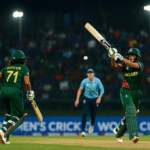



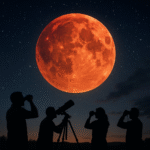
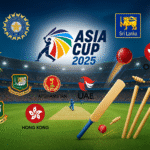

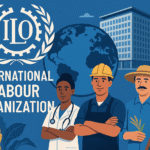




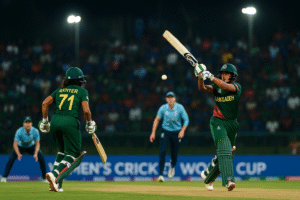



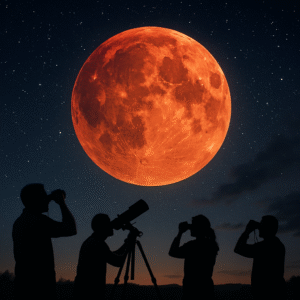
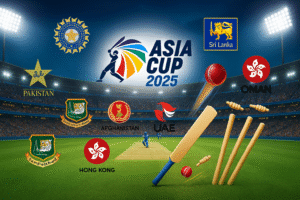

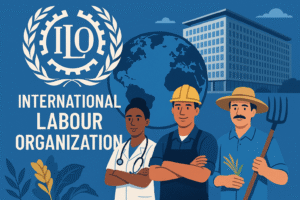

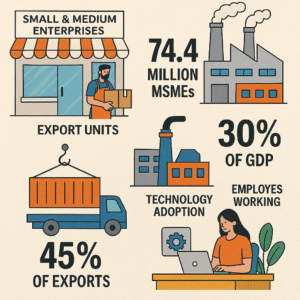
Post Comment